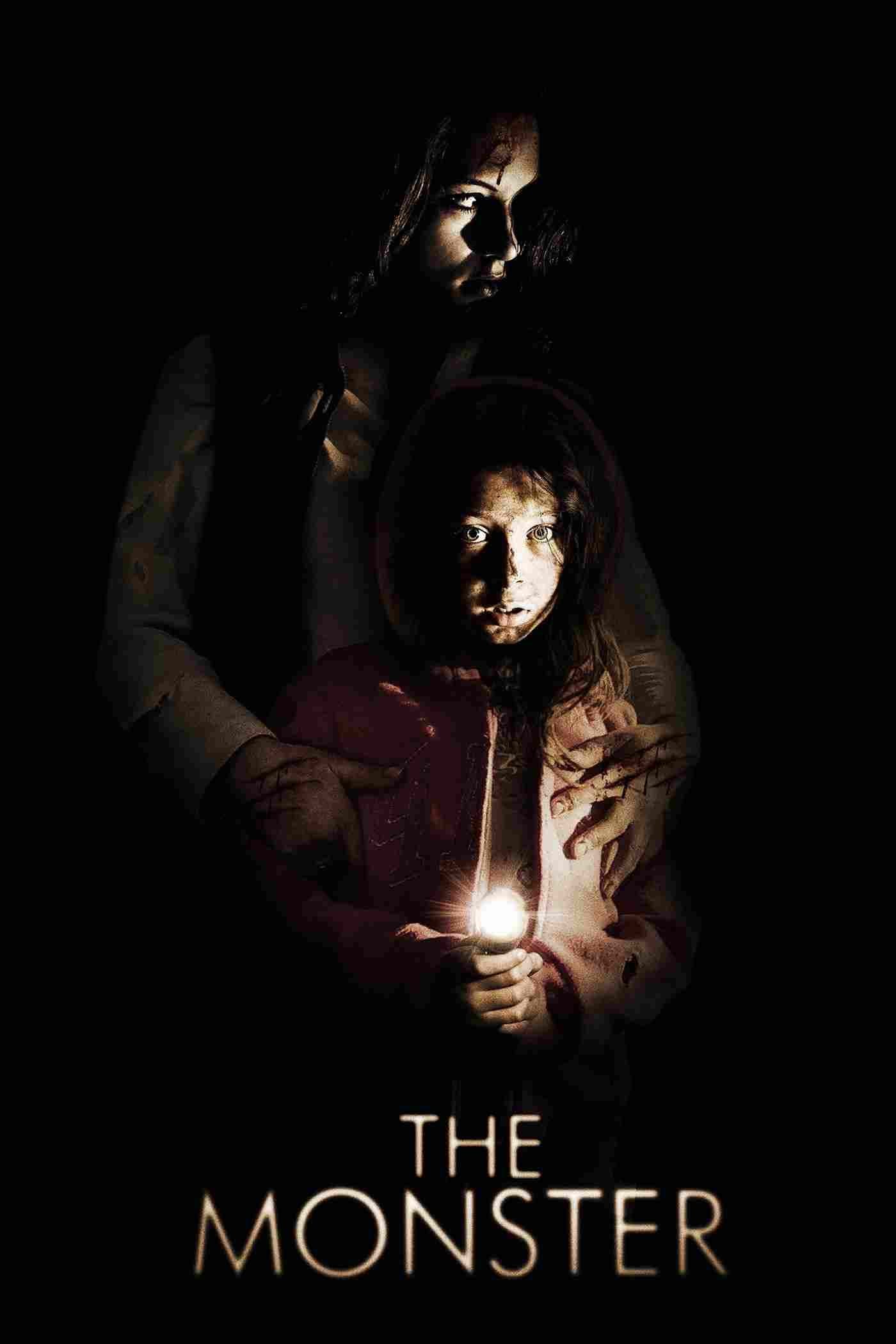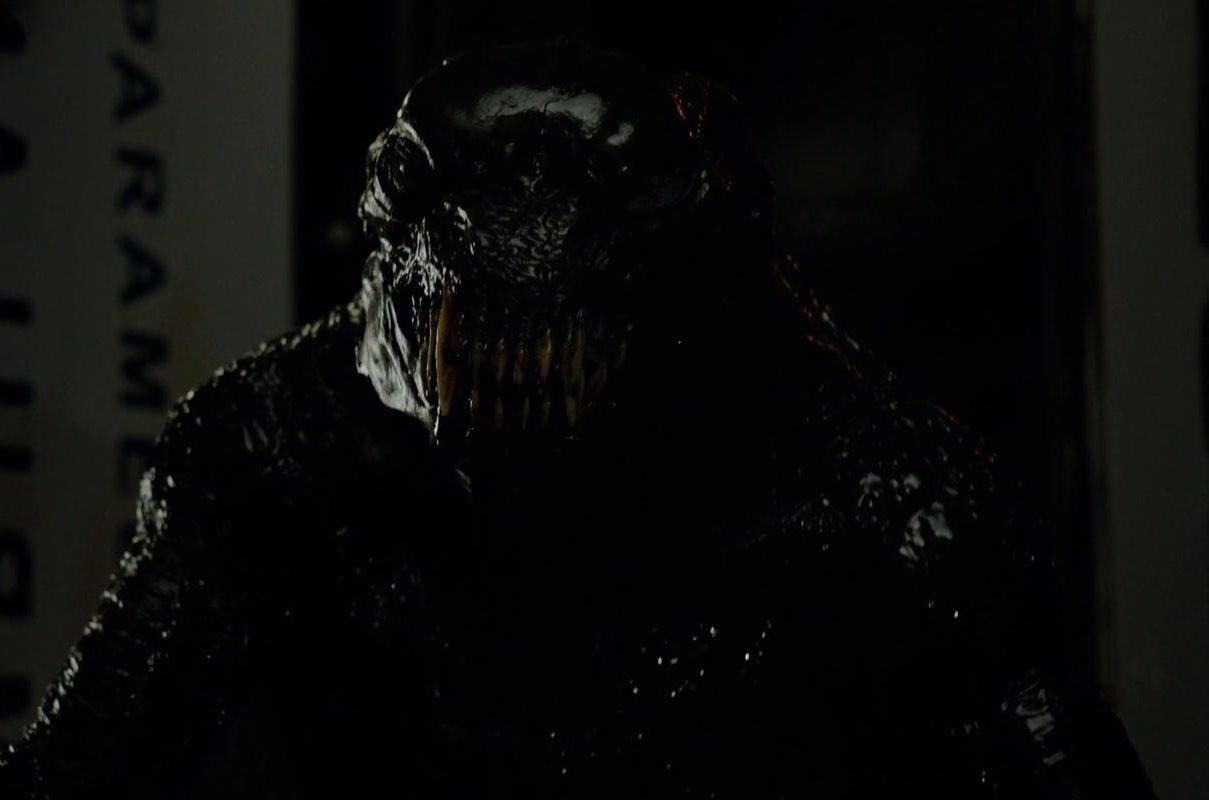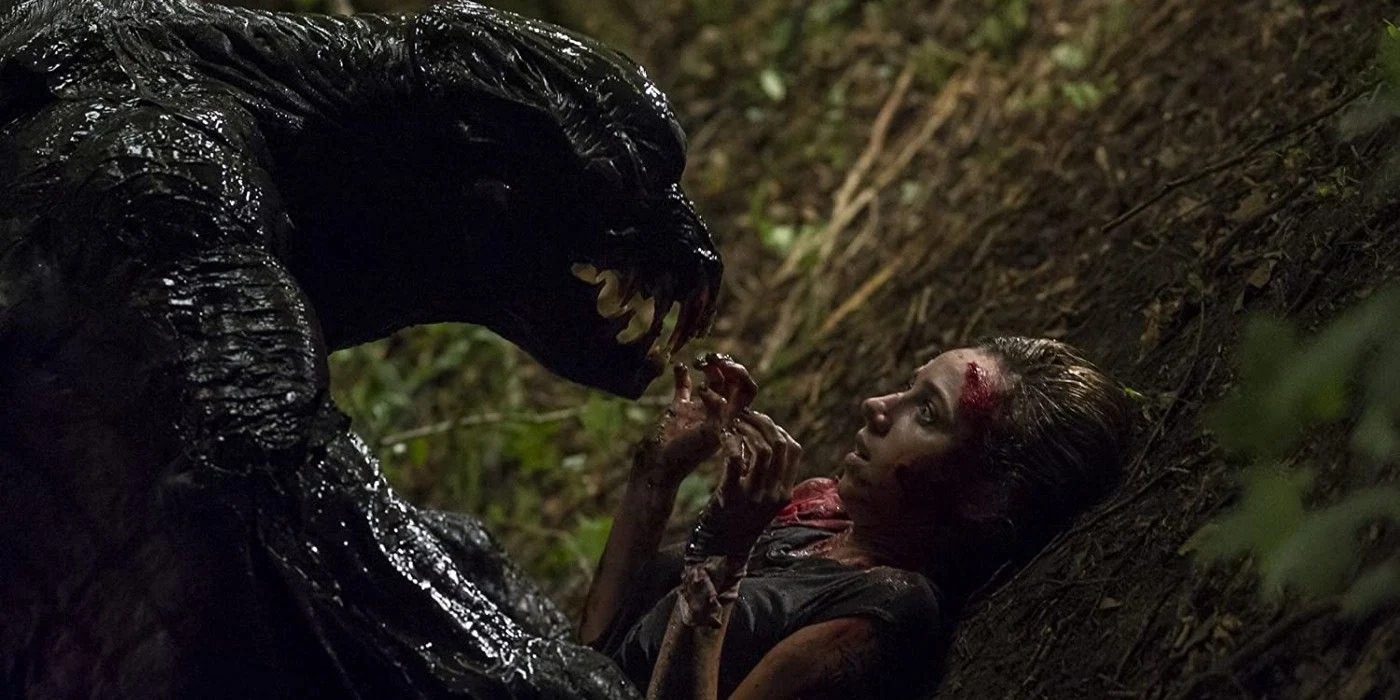The Monster is a creature feature film from 2016 that contains a double-layered meaning for the word Monster. The film, which stars Zoe Kazan and Ella Ballentine, was written and directed by Bryan Bertino. Kathy (Zoe Kazan) and her daughter Lizzy (Ella Ballentine) are on their way to her father’s house to switch custody. They get stopped on a country road late at night while on their trip, pursued by a malicious entity, our physiological Monster.
The Monster, by Bryan Bertino, is a brutally powerful metaphor for the upheaval of adolescence, with all of its rebelliousness and bewilderment. Adolescents are typically depicted in negative terms as they attempt to cope with the tremendous changes consuming their bodies and brains.
Even yet, a child with an alcoholic mother and a father who is purposefully absent can not have it easy. They are being followed by a monstrous creature. The Monster’s heinous scale should appeal to discerning horror fans while also setting the groundwork for potential cult status. It is a picture that does a fantastic job of honoring the creature feature genre while also addressing real interpersonal concerns between the mother and daughter.
The Monster (2016)

The film shows Lizzy (Ella Ballentine) as she starts her day by cooking herself breakfast, cleaning up the living room after Kathy’s (Zoe Kazan) previous-night binge, and constantly attempting to wake her sleepy hangover mother.
Kathy is already late and is driving her adolescent daughter Lizzy to her father’s residence for court proceedings. Kathy is primarily consumed by her excessive alcohol consumption, leaving Lizzy to fend for herself. Lizzy has finally decided to put a stop to all of the turmoil and move out of town to live with her father after enduring her mother’s continuous outbursts and frequent binges.
Kathy’s addiction has destroyed her life and shattered her relationship with her daughter Lizzy (Ella Ballentine). We get a devastating representation of what addiction can do to even something as pure as a mother-child attachment, mainly through flashbacks.
As the writer and director, Bryan Bertino has been willing to show Kathy as a horrible human being in one of his most daring actions. This isn’t just a Hollywood portrayal of a mediocre mother. Kathy has done terrible things to her child, and she not only admits it, but she also knows that handing over custody of her child to the birth father is a bed she created and now has to lie in.
Interestingly, the movie poster’s artwork is similar to that of The Babadook (2014), with similar tones. The only difference is the order of the tones is reversed: The Babadook cover has a white background with a black creature taking over the screen (anticipating the film’s premise), while The Monster has a black background with a white and grey creature carved in (also foreshadowing the film’s premise). Similarly, the film depicts a strained mother-child connection like The Babadook.
Kathy hits a wolf with her automobile as darkness falls. However, it appears that its injuries were caused by an animal attack rather than by their car. Lizzy summons a tow truck and an ambulance because Kathy was hurt in the collision. When the tow truck arrives, Jesse, the driver, gets to work under the automobile.
Lizzy detects something odd about the wolf carcass in the middle of the rain-soaked road: it appears to have been fighting something. Something significant. Before we know it, something huge and terrible appears in the background.
Then there’s the poor, doomed mechanic. Kathy gets out of the car, tired of arguing with Lizzy, and looks for Jesse, but he is nowhere to be found. Unfortunately, in the woods, there is an awful beast. Jesse crawls out of the woods in anguish, but a monster thing drags him under the tow truck and consumes him before Kathy can save him, and Jesse’s severed arm drops on the hood of the car all of a sudden.
What lurks in the woods is a terrible creature that resembles a cross between H.R. Giger’s design from “Alien” and something more horrifically macho and phallic. Kathy and Lizzy are forced to take refuge in their broken-down vehicle, hoping for help but fearful that they may not survive long enough for it to arrive. Kathy then understands she’ll have to act if she wants to save her daughter.
This story is told in a sequence of flashbacks while the women are stuck in the car, which is the most significant part of The Monster. The film is at its most raw and cruel in these flashbacks.
No evil thing in the woods can compare to these two people, who should be in the most loving of relationships, cursing at each other and professing their disdain for each other in a way that is far more serious than teen angst.
Of course, the symbolism of the Monster in the woods that the addict must battle in order to protect her child is obvious. Some critics have criticized the picture for being too blatant in its connections, yet great horror is frequently powerfully symbolic of real-life fears and experiences. Some people also believe that the creature is the cause of Kathy’s tire blowout and, possibly, a collision with a wolf.
The Monster attacks the car, dragging Kathy out, attracted by the sound of music emerging from Lizzy’s teddy bear. It is a gruesome and fear-inducing scene. There is an oncoming ambulance that, thankfully, only temporarily scares it away by its lights before it can kill her. However, the creature kills the EMT team while Kathy and Lizzy cower in the ambulance.
The creature attacks the ambulance after killing the EMT while Kathy tries to flee by swerving into the woods. She gets injured in the process as she starts vomiting blood and realizes that she might be bleeding internally. She knows that the bleeding will kill her soon.
So, Kathy uses her lighter to find a torch and tells Lizzy her survival plan now that she knows the Monster is terrified of bright light. She plans to flee into the woods, where the Monster will pursue her, and Lizzy will run towards the road and try to get help for herself. She tells Lizzy that she is the most important person in her life as she is overcome by emotions and regret.
Kathy permits herself to be assaulted by the creature because she believes Lizzy is rushing towards the road to save herself. But Lizzy, who has refused to leave, hits it with a hammer and uses the flashlight to chase the creature away. Lizzy realizes her mother is dead and takes an ambulance spray can and her mother’s lighter to set the Monster on fire.
The makeshift flamethrower works really well as she kills it using that. She then beats the creature with a massive stick after a final twitch from it because one can never be too sure with monsters! Kathy had apologized and predicted that Lizzy would grow up to be a better person than she was after a particularly unpleasant, alcohol-fuelled episode, Lizzy recalls.
Lizzy comes through from the trees, just as the sun rises. It ends with a sense of optimism and hope despite all that has happened in Lizzy’s life so far. I think that the final moments with her mother might help her soothe the wounds caused by Kathy, at least a little.
Kazan and Ballentine are excellent when given far more complex characters to work with than the typical genre, each eager to delve into how interpersonal struggle has left this team not just victims but impatient, unforgiving, and often nasty toward one another. Their core link is shown in a crisis, yet it is handled without emotion.
Elisabeth Moss was initially selected to play the role of Kathy, but I think that Kazan is a better fit for the role, and the chemistry between the two works out better on screen. The fact that Kazan’s acting portrays the truth of Kathy’s struggle is one of the reasons why “The Monster” works. She portrays a mother who is struggling for her child’s and her own life. In the way, it never betrays the truth of her predicament; it’s a dedicated, courageous performance. It’s not Kazan’s usual style, but it’s a fantastic performance.
Black Reptilian Monster

There isn’t a single explanation for what the “monster” is or where it originated from. Is it a supernatural occurrence? Is it possible that it is an alien? Is this some type of primordial anomaly? When confronted head-on, it’s a relatively old-school, man-scaled reptile beastie that’s certainly terrible enough.
But like in “The Strangers,” this threat is most terrifying when it remains unknown. The fact that it stays a complete riddle until the conclusion may appear to some as a plot device, and there is a certain lack of residual resonance to a monster movie in which the Monster is, well, a monster, with no context, purpose, or past.
However, like Bertino’s sleeper smash “Mockingbird,” this film makes a point of emphasizing its conceptual simplicity. Bertino had a vision of a monster that was not only terrifying while accurately conveying the weighty metaphor of the mother and daughter characters’ dysfunctional relationship.
The Monster resembles a giant reptile with black scale-like skin, blank white eyes, and yellow fangs. It has long, sharp claws on its limbs. Although it is never seen flying, its arms contain what appears to be skin linked from its hands to the side of its body, similar to that of a bat’s wings. The Monster allowed the ADI team to get their teeth into the mechanics by relying more on practical creature effects and puppetry.
ADI was given complete creative control over the scary figure, allowing him to concentrate solely on the Monster’s mechanical requirements. The performer’s human profile was attempted to be hidden inside the suit, and as Gillis noted, ” We were able to disguise it not by being ghostly but more beastly.”
An articulated servo head, eye movements, cheek and brow articulations, and a servo articulated head were operated by the crew just out of frame. At the same time, the performer worked his torso and arms.
The movie shines when the actual Monster is the focal point. The horror is palpable; this Monster is capable of unspeakable deeds. The Monster’s tar-black look, which resembles that of a bird, can be unnerving at times.
Bertino does an excellent job of avoiding too much display of the creature. For the most part, he is kept in the shadows, which helps because the beast doesn’t like light (yet another metaphor about bringing your personal demons to the light, we get it). We never get a decent look at the creature until the final confrontation.
The Monster is a vicious and destructive beast that kills both humans and animals for no apparent cause, as evidenced by its massive measures to ensure Kathy and Lizzie are unable to flee. It tears its prey to bits the moment its fangs burrow into their flesh and refuse to let go. It can only be stopped if someone intervenes or if it is exposed to bright light, which it dislikes.
It is also revealed to be sadistic, like when it trapped Lizzy at the end of the film; instead of attacking her right away, it sits and waits for her to respond first, implying that it enjoys killing fearful and unsuspecting prey.
Why should you watch The Monster?

If you have loved Babadook, then The Monster is a must-watch for horror fans. It is a dramatic horror film that tries to tread the balance between exploring the horrors of a creature and the horrors of life with an abusive parent and impaired interpersonal relationships.
The film comes with a lot of flashbacks and issues between the mother and daughter, but it does a great job of showcasing the relationship and trying to heal it at the last moment when Kathy realizes that she is going to lose Lizzy for good.
Despite never being a mother to Lizzy, when her daughter’s life is in danger, she comes to her senses and tries her hardest to protect her. The entire film had enraptured me completely. One could really relate to the characters even without ever being in a life-threatening situation. Some of the moments shared between Kathy and Lizzy are so heart-warming and sweet that one sometimes forgets that there is a monster lurking nearby trying to attack them.
Horror films with a mother and child interaction have long been popular, but they’ve seen a comeback in recent years. The Monster does a great job of showing the horrors of creatures and bad relationships.
The Monster looks at the grief on both sides of a mother-daughter relationship, examining the ways in which two people can intentionally and accidentally injure each other. It has an eerie atmosphere to it and watching it may be rather unpleasant for some. Those who can handle these kinds of situations would love this film.
